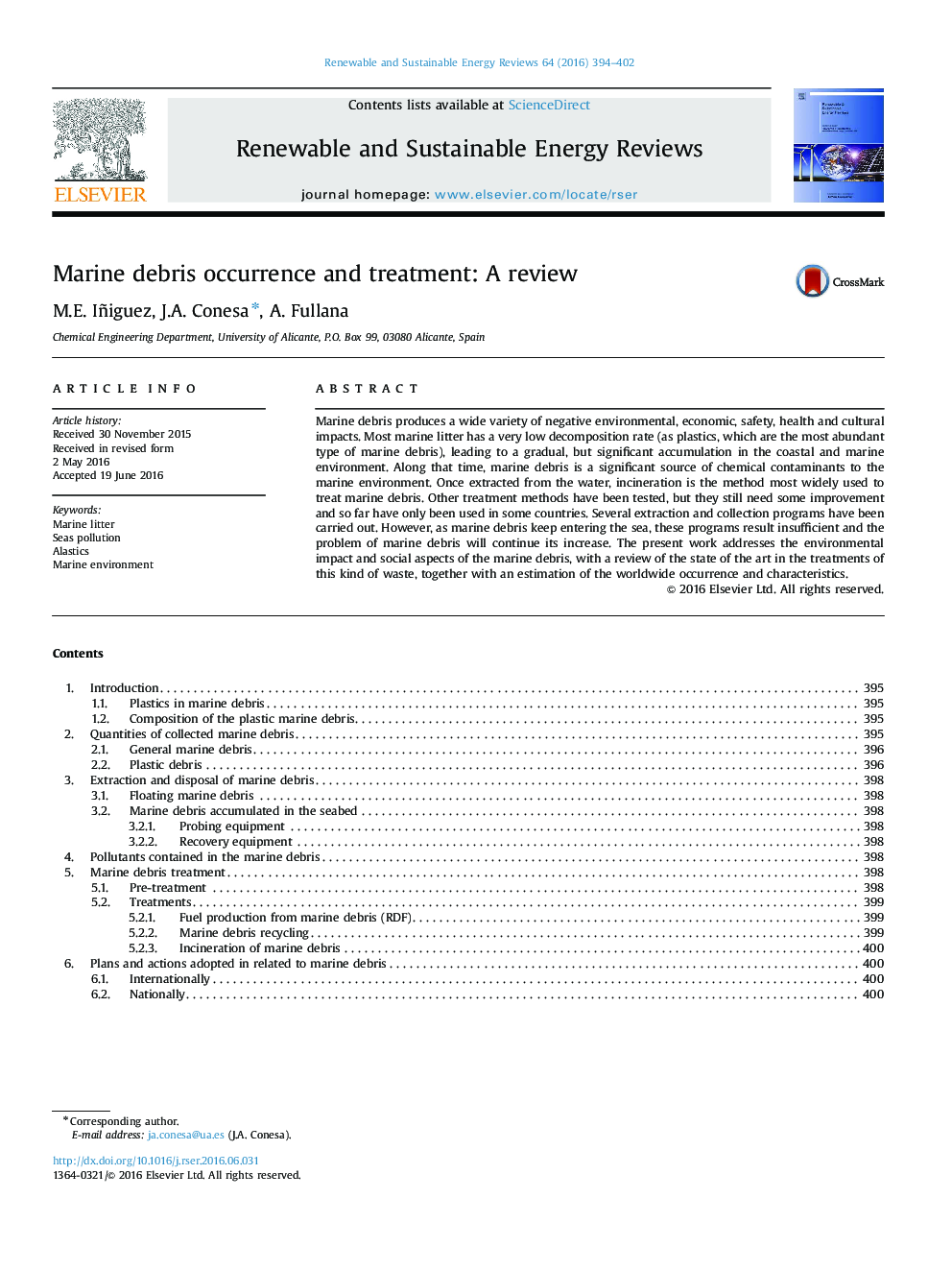| Article ID | Journal | Published Year | Pages | File Type |
|---|---|---|---|---|
| 8113068 | Renewable and Sustainable Energy Reviews | 2016 | 9 Pages |
Abstract
Marine debris produces a wide variety of negative environmental, economic, safety, health and cultural impacts. Most marine litter has a very low decomposition rate (as plastics, which are the most abundant type of marine debris), leading to a gradual, but significant accumulation in the coastal and marine environment. Along that time, marine debris is a significant source of chemical contaminants to the marine environment. Once extracted from the water, incineration is the method most widely used to treat marine debris. Other treatment methods have been tested, but they still need some improvement and so far have only been used in some countries. Several extraction and collection programs have been carried out. However, as marine debris keep entering the sea, these programs result insufficient and the problem of marine debris will continue its increase. The present work addresses the environmental impact and social aspects of the marine debris, with a review of the state of the art in the treatments of this kind of waste, together with an estimation of the worldwide occurrence and characteristics.
Keywords
Related Topics
Physical Sciences and Engineering
Energy
Renewable Energy, Sustainability and the Environment
Authors
M.E. Iñiguez, J.A. Conesa, A. Fullana,
